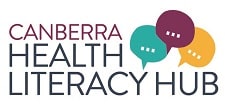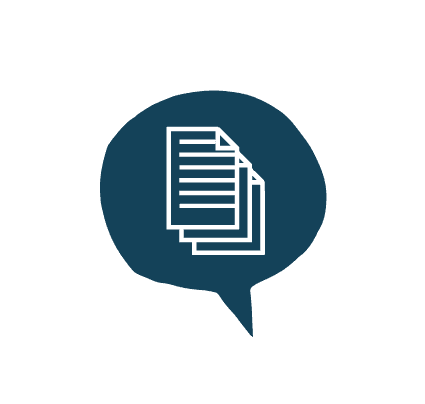Health Literate Health Services
Health Literate Health Services
Key points:
- In a health literate organisation, health literacy is part of all service planning, design, delivery and evaluation.
- Health literate services create an environment that makes it easier for consumers to access services and get, understand and act on health information.
- Services with good environmental health literacy can improve safety and quality, consumer satisfaction, and reduce costs and inefficiency.
- Health literate organisations share 10 key attributes.
- Organisational self-assessment tools can help your organisation become more health literate.
What is a health literate service?
Health literate organisations make it easy for anyone to find, understand and use their information and services. They do this by:
- Improving access to services and information. Well-designed facilities make it easier for consumers to find the services they need, when they need them. Consumers who get good information from service providers are more likely to understand when to seek treatment and preventive care. This reduces emergency service use and improves health outcomes.
- Improving interactions between consumers and health professionals. When providers tailor how they communicate to the needs of consumers, check understanding and encourage questions, health outcomes tend to be better. Consumers ask more questions, and are more likely to follow advice and understand recommendations.
- Supporting people to look after their own health and wellbeing. Consumers who are well informed understand what they can do to manage their health and wellbeing, including when they have one or more long-term condition.
In a health literate organisation, health literacy is part of all service planning, design, delivery and evaluation – it is everyone’s business. All aspects of the organisation are focussed on the needs of consumers and cater for everyone. There is no need to identify who is, or is not, health literate.
Why is being a health literate organisation important?
Organisations and services with good environmental health literacy:
- Improve consumer safety and reduce risk
- Improve quality of care
- Meet accreditation and performance requirements
- Improve consumer satisfaction and reduces complaints
- Is more efficient and cost-effective
The National Statement on Health Literacy makes it clear that health services are responsible for the health literacy environment. Health literate services make it easier for consumers and clinicians to give and receive, understand and act on health information – written or spoken. This improves the safety and quality of health care, reduces health disparities and increases equity [i].
Consumer safety
The organisational health literacy of healthcare services influences the quality and safety of the care they provide [i].
Improving the health literacy of your organisation will support improved safety and quality of care, and reduce the risk of complaints and litigation.
Effective communication between healthcare providers and consumers is a fundamental requirement for safe health care [ii]. Effective communication means that consumers understand their rights, responsibilities and treatment options. It also supports consumer involvement in shared decision making and informed consent [iii]. This protects consumers from potential harms and reduces the risk of legal action.
Safety and quality
Health literacy is part of the national approach to improving the safety and quality of healthcare [iv].
Many accreditation and performance standards for health services and professions both directly and indirectly require a focus on health literacy [v].
Consumer satisfaction
Being a health literate organisation can boost consumer and employee satisfaction [vi] and reduce complaints.
Organisations that communicate in ways that are easy to understand score better on consumer satisfaction surveys [vii].
Consumers also report a better experience when organisations understand and address their needs and preferences [viii].
Poor communication is a major cause of health complaints [ix]. One North American survey found that 4 of the top 10 reasons for malpractice lawsuits were due to poor patient education or communication between provider and patient [x].
Health care services are less likely to attract complaints when they:
- Encourage their patients to ask questions
- Check their patients’ understanding
- Provide care that reflects individual patients’ preferences.
Efficiency and cost effectiveness
Patient consultations that include methods to check patients’ recall and understanding, such as Teach-back, do not take longer, and can prevent unnecessary future appointments [xi].
Organisations that communicate clearly with their staff improve efficiency by reducing confusion [xii].
Health services that focus on health literacy can also reduce costs because patients are less likely to require frequent emergency department visits or be hospitalised for avoidable reasons [xiii].
How do organisations become health literate?
The Australian Commission on Safety and Quality in Health Care (ASCQHC) recommends using the US Agency for Healthcare Research and Quality (AHRQ)’s Ten Attributes of a Health Literate Organisation to asses your organisation’s health literacy environment and improve it [ii].
There are other Australian and international tools that assist healthcare services and community organisations to assess and improve the health literacy environment. You can find them on the Self-Assessment page and in the Resources Hub.
10 Attributes of a Health Literate Organisation
| Attribute | Examples of actions that can be taken by organisation and health services |
|---|---|
| 1. Has leadership that makes health literacy integral to the mission, structure and operations of the healthcare organisation |
|
| 2. Integrates health literacy into planning, evaluation, patient safety and quality improvement |
|
| 3. Prepares the workforce to be health literate, and monitors progress |
|
| 4. Includes populations served by the organisation in the design, implementation and evaluation of health information and services |
|
| 5. Meets the needs of populations with a range of health literacy skills while avoiding stigmatisation |
|
| 6. Uses health literacy strategies in interpersonal communication, and confirms understanding at all points of contact |
|
| 7. Provides easy access to health information and services, and navigation assistance |
|
| 8. Designs and distributes print, audio-visual and social media content that is easy to understand and act on |
|
| 9. Addresses health literacy in high-risk situations, including care transitions and information about medicines |
|
| 10. Communicates clearly about what individuals will have to pay for services |
|
References:
[i] Australian Commission on Safety and Quality in Health Care. Health literacy: Taking action to improve safety and quality. Sydney: ACSQHC, 2014
[i] Bonaccorsi, G.; Romiti, A.; Ierardi, F.; Innocenti, M.; Del Riccio, M.; Frandi, S.; Bachini, L.; Zanobini, P.; Gemmi, F.; Lorini, C. Health-Literate Healthcare Organizations and Quality of Care in Hospitals: A Cross-Sectional Study Conducted in Tuscany. Int. J. Environ. Res. Public Health 2020, 17, 2508.
[ii] Australian Commission on Safety and Quality in Health Care. Health Literacy: Taking action to improve safety and quality. Sydney: ACSQHC, 2014.
[iii] Australian Commission on Safety and Quality in Health Care. Health Literacy: Taking action to improve safety and quality. Sydney: ACSQHC, 2014.
[iv] Australian Commission on Safety and Quality in Health Care. Consumers, the health system and health literacy. Consultation Paper. Sydney: ACSQHC, 2013
[v] Australian Commission on Safety and Quality in Health Care. Health Literacy: Taking action to improve safety and quality. Sydney: ACSQHC, 2014.
[vi] Hayran O, Ozer O. Organisational health literacy as a determinant of patient satisfaction, Public Health. 2018
[vii] National Academies of Sciences, Engineering and Medicine (NASEM). Building the case for health literacy: Proceeding of a Workshop. 2018.
[viii] National Academies of Sciences, Engineering and Medicine (NASEM). Building the case for health literacy: Proceeding of a Workshop. 2018
[ix] Pincock S. Poor communication lies at heart of NHS complaints, says ombudsman. BMJ. 2004;328(7430):10.
[x] National Academies of Sciences, Engineering and Medicine (NASEM). Building the case for health literacy: Proceeding of a Workshop. 2018.
[xi] Health West Partnership, Make it Easy: A Handbook for Becoming a Health Literate Organisation https://cbrhl.org.au/wp-content/uploads/2020/11/HealthWest_Make-it-Easy_web.pdf
[xii] Abrams MA, Kurtz-Rossi S, Riffenburgh A, Savage BA. Building Health Literate Organizations: A Guidebook to Achieving Organizational Change. 2014
[xiii] National Academies of Sciences, Engineering and Medicine (NASEM). Building the case for health literacy: Proceeding of a Workshop. 2018
[xiv] Australian Commission on Safety and Quality in Health Care. Health Literacy: Taking action to improve safety and quality. Sydney: ACSQHC, 2014
[xiv]
Last Updated on 17 April, 2025.




